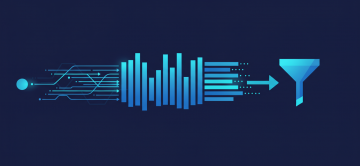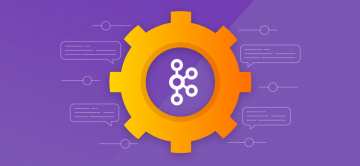Demystifying Apache Kafka: Essential Guide to Core Concepts

Demystifying Apache Kafka: Your Essential Guide to Core Concepts
In today's data-driven world, the ability to process and act on information in real-time is no longer a luxury – it's a necessity. Businesses across industries are leveraging streaming data for everything from instant fraud detection to personalized user experiences. At the heart of many of these powerful real-time systems lies Apache Kafka®, a distributed event streaming platform capable of handling trillions of events a day.
But what exactly is Kafka, and how does it work its magic? If you're new to Kafka or looking for a clear refresher, you've come to the right place. This guide will break down the fundamental building blocks of Apache Kafka, demystifying its core concepts so you can understand its power and potential.
At ActiveWizards, we've helped numerous clients design, implement, and optimize robust Kafka architectures. We believe that a solid understanding of the fundamentals, complemented by practical examples, is the first step towards unlocking its true potential.
What is an Event Stream? The Foundation of Kafka
Before diving into Kafka's components, let's understand what it manages: event streams. Think of an event as a record of something that happened. It could be:
- A website click
- A payment transaction
- A sensor reading from an IoT device
- A log entry from an application
- A customer order
An event stream is a continuous, unbounded sequence of these events, ordered by time. Kafka is designed to capture, store, and process these event streams reliably and at scale.
The Core Components of Apache Kafka: A Deep Dive
Now, let's explore the key pieces that make up the Kafka ecosystem:
1. Events (or Messages/Records)
An event (often called a message or record in Kafka terminology) is the most basic unit of data in Kafka. It represents a single piece of information that has been published to the stream. Each event typically consists of:
- Key (Optional): Used for routing messages to specific partitions. Events with the same key are guaranteed to go to the same partition, ensuring order for that key.
- Value: The actual payload of the event (e.g., a JSON object, string, Avro record).
- Timestamp: Automatically added by Kafka or provided by the producer, indicating when the event occurred or was produced.
- Headers (Optional): Metadata associated with the event (e.g., source, trace ID).
2. Topics: Organizing Your Event Streams
Imagine topics as a combination of a database table and a message queue. A topic is a named category or feed to which events are published. For example, you might have topics like user_clicks, order_updates, or iot_sensor_data. Producers write events to specific topics, and consumers read events from specific topics.
3. Partitions: Enabling Scalability and Parallelism
This is where Kafka's power truly shines. Each topic is divided into one or more partitions. Partitions are the fundamental unit of parallelism in Kafka. Here's why they're crucial:
- Scalability: Data for a topic can be spread across multiple brokers (servers) by distributing its partitions. This allows a topic to handle more data than can fit on a single server.
- Parallel Processing: Multiple consumers (within a consumer group) can read from different partitions of the same topic simultaneously, enabling high-throughput processing.
- Ordering Guarantees: Within a single partition, events are stored in the order they are appended. Kafka only guarantees order within a partition, not across all partitions of a topic (unless you have only one partition, which limits scalability).
When an event is published to a topic, Kafka decides which partition to send it to. If a key is provided, a hashing function is typically used on the key to determine the partition. If no key is provided, events are usually distributed to partitions in a round-robin fashion.
4. Offsets: Keeping Track of Your Place
Each event within a partition is assigned a unique, sequential ID number called an offset. Offsets are immutable and strictly increasing. Consumers use offsets to track which events they have already processed. This allows a consumer to stop and restart without losing its place or re-processing data unnecessarily.
Think of it like a bookmark in a very long, append-only log file.
5. Brokers: The Kafka Servers
A Kafka broker is simply a server running the Kafka software. Each broker hosts a set of partitions for one or more topics. Brokers are responsible for:
- Receiving events from producers.
- Storing events durably on disk.
- Serving events to consumers.
- Managing partition replication for fault tolerance.
6. Clusters: The Backbone of Reliability and Scale
A Kafka cluster consists of one or more brokers working together. By distributing partitions across multiple brokers and replicating them, a Kafka cluster provides:
- Fault Tolerance: If one broker fails, other brokers holding replicas of its partitions can take over, ensuring data availability and continuous operation.
- Scalability: You can scale your Kafka cluster by adding more brokers to handle increased load and data volume.
7. Producers: Sending Events into Kafka
A producer is a client application that publishes (writes) events to Kafka topics. Producers are responsible for choosing which topic to write to, serializing the event data, and handling acknowledgments from brokers.
Here’s a very basic example of how a Python producer might send a message using the kafka-python library:
(Note: This is a simplified example for illustrative purposes. Production code would require more robust error handling and configuration.)
from kafka import KafkaProducer
import json
# Create a KafkaProducer instance
# Replace 'kafka-broker1:9092' with your Kafka broker addresses
producer = KafkaProducer(
bootstrap_servers=['kafka-broker1:9092', 'kafka-broker2:9092'],
value_serializer=lambda v: json.dumps(v).encode('utf-8') # Serialize JSON to bytes
)
# Define the topic and the message
topic_name = 'user_clicks'
message = {'user_id': 'user123', 'page': '/home', 'timestamp': '2023-10-27T10:00:00Z'}
# Send the message
try:
# The key can be used for partitioning (optional)
# Ensure the key is also bytes if provided
producer.send(topic_name, key=b'user123', value=message)
producer.flush() # Ensure all messages are sent before exiting
print(f"Message sent to topic {topic_name}: {message}")
except Exception as e:
print(f"Error sending message: {e}")
finally:
producer.close()
In this snippet, we configure a KafkaProducer, specify our Kafka brokers, and serialize our message (a Python dictionary) into JSON bytes before sending it to the user_clicks topic. Using a key (like user_id, also encoded to bytes) helps ensure all events for that user go to the same partition.
8. Consumers & Consumer Groups: Reading Events from Kafka
A consumer is a client application that subscribes to (reads) events from one or more Kafka topics. To enable parallel processing and load balancing, consumers typically operate as part of a consumer group.
- Consumer Group: A set of consumers that collectively consume events from one or more topics. Each partition within a topic is assigned to exactly one consumer within a consumer group at any given time. This ensures that each event is processed by only one consumer in that group.
- Load Balancing: If you add more consumers to a group (up to the number of partitions), Kafka will automatically rebalance the partition assignments among them. Similarly, if a consumer fails, its assigned partitions are re-assigned to other active consumers in the group.
Here's a simplified Python example of a consumer reading messages:
(Note: This is a simplified example. Production consumers need robust error handling, offset management strategies, and graceful shutdown mechanisms.)
from kafka import KafkaConsumer
import json
# Create a KafkaConsumer instance
# Replace 'kafka-broker1:9092' with your Kafka broker addresses
# 'my-user-clicks-group' is the ID for this consumer group
consumer = KafkaConsumer(
'user_clicks', # Topic to subscribe to
bootstrap_servers=['kafka-broker1:9092', 'kafka-broker2:9092'],
group_id='my-user-clicks-group',
auto_offset_reset='earliest', # Start reading at the earliest message if no offset is stored
value_deserializer=lambda v: json.loads(v.decode('utf-8')) # Deserialize JSON bytes
)
print(f"Subscribed to topic 'user_clicks' as part of group 'my-user-clicks-group'. Waiting for messages...")
try:
for message in consumer:
# message.value is already deserialized by value_deserializer
# message.key will be bytes, decode if needed, e.g., message.key.decode('utf-8')
print(f"Received message: Partition={message.partition}, Offset={message.offset}, Key={message.key}, Value={message.value}")
# Process the message here (e.g., store in a database, trigger another action)
except KeyboardInterrupt:
print("Stopping consumer...")
except Exception as e:
print(f"An error occurred: {e}")
finally:
consumer.close()
This consumer subscribes to the user_clicks topic as part of my-user-clicks-group. It will continuously poll for new messages, deserialize them from JSON, and print their details. If multiple instances of this consumer script run with the same group_id, Kafka will distribute the topic's partitions among them.
9. ZooKeeper vs. KRaft: Managing Cluster Metadata
Historically, Apache Kafka relied on Apache ZooKeeper™ for crucial cluster metadata management, such as:
- Tracking the status of brokers.
- Maintaining lists of topics, partitions, and their configurations.
- Electing controller brokers (responsible for managing partition leadership).
However, managing a separate ZooKeeper ensemble added operational complexity. More recent versions of Kafka have introduced KRaft (Kafka Raft Metadata mode), which allows Kafka to manage its own metadata using a Raft consensus protocol, eliminating the ZooKeeper dependency. This simplifies deployment and operations. While many existing deployments still use ZooKeeper, KRaft is the future direction for Kafka metadata management.
While many existing deployments still use ZooKeeper, KRaft is the future direction for Kafka metadata management.
Now that we've covered the individual components, let's visualize how they interact within the broader Apache Kafka ecosystem:
Diagram 1: A simplified view of the Apache Kafka Ecosystem.
This diagram illustrates Producers sending messages to Topics. These Topics, managed by Brokers (which host the underlying Partitions) and coordinated by Metadata services (ZooKeeper/KRaft), are then consumed by different Consumer Groups. This high-level view sets the stage for understanding the typical data flow through Kafka..
Putting It All Together: A Typical Kafka Flow
- Producers publish events to specific topics.
- Kafka routes these events to available partitions within those topics, which are hosted on brokers in a cluster. Events are stored with an offset.
- Consumers, organized into consumer groups, subscribe to topics. Kafka assigns partitions to consumers within a group.
- Each consumer polls its assigned partitions for new events, processing them in order based on their offsets.
- All this is coordinated and managed by metadata stored either in ZooKeeper or directly by Kafka brokers using KRaft.
Why Understanding These Concepts Matters
Grasping these core concepts is essential for anyone working with Kafka. Whether you're:
- Designing a new streaming application: You need to think about topic design, partitioning strategy, and consumer group behavior.
- Troubleshooting performance issues: Understanding how brokers, partitions, and consumers interact is key.
- Scaling your Kafka deployment: Knowledge of clusters and partitioning helps you make informed decisions.
Apache Kafka is a powerful and versatile platform, but its strength comes from the elegant interplay of these fundamental components.
Kafka Core Components at a Glance (Quick Reference)
| Component | Primary Role |
|---|---|
| Event/Message | The basic unit of data in Kafka; a record of something that happened. |
| Topic | A named category or feed to which events are published and from which they are consumed. |
| Partition | A division of a topic; the fundamental unit of parallelism and ordering within Kafka. |
| Offset | A unique, sequential ID assigned to each event within a partition, used by consumers to track their position. |
| Broker | A Kafka server that hosts topic partitions, stores data, and serves client requests. |
| Cluster | A group of one or more brokers working together for scalability and fault tolerance. |
| Producer | A client application that publishes (writes) events to Kafka topics. |
| Consumer | A client application that subscribes to (reads) events from Kafka topics. |
| Consumer Group | A set of consumers that work together to consume a topic, with each partition assigned to one consumer in the group. |
| ZooKeeper (Legacy) | Historically used for Kafka cluster metadata management and coordination. |
| KRaft (Current/Future) | Kafka Raft Metadata mode; allows Kafka to manage its own metadata without ZooKeeper. |
Glossary of Kafka Terms
- Broker:
- A single Kafka server. Brokers are responsible for receiving messages from producers, assigning offsets to them, and committing the messages to storage on disk. They also serve messages to consumers.
- Cluster:
- A group of one or more Kafka brokers working together to provide fault tolerance and scalability.
- Consumer:
- An application that subscribes to (reads) and processes messages from Kafka topics.
- Consumer Group:
- A set of consumers that cooperate to consume messages from one or more topics. Kafka ensures that each partition of a topic is consumed by only one consumer within the group at any given time, enabling parallel processing.
- Event (Message/Record):
- The fundamental unit of data in Kafka. It typically consists of a key (optional), a value (the payload), a timestamp, and headers (optional metadata).
- KRaft (Kafka Raft Metadata mode):
- A consensus protocol that allows Kafka brokers to manage cluster metadata themselves, eliminating the dependency on Apache ZooKeeper for new cluster deployments.
- Offset:
- A unique, sequential integer ID assigned by Kafka to each message within a partition. Consumers use offsets to track their read position.
- Partition:
- A division of a topic. Each topic is split into one or more partitions. Partitions are the basic unit of parallelism in Kafka; messages within a partition are ordered, and each partition can be hosted on a different broker.
- Producer:
- An application that publishes (writes) messages to Kafka topics.
- Topic:
- A named category or feed to which messages are published by producers and from which messages are subscribed to by consumers. Topics are multi-subscriber; meaning, a topic can have zero, one, or many consumers that subscribe to the data written to it.
- ZooKeeper:
- A centralized service for maintaining configuration information, naming, providing distributed synchronization, and providing group services. Historically, Kafka used ZooKeeper for cluster coordination and metadata management, though newer versions are moving towards KRaft mode.
Further Exploration & Official Documentation
For more in-depth information and the latest updates, we always recommend referring to the official Apache Kafka documentation:
- Apache Kafka Official Documentation - The primary source for all Kafka concepts, configurations, and APIs.
- Getting Started with Apache Kafka - A good starting point for new users.
- Use Cases for Apache Kafka - Explore various ways Kafka is used in real-world scenarios.
Ready to Harness the Power of Kafka for Your Business?
Apache Kafka can be a game-changer for real-time data processing, but designing, deploying, and managing a production-grade Kafka cluster requires expertise. If you're looking to leverage Kafka to build innovative solutions or need help optimizing your existing Kafka infrastructure, ActiveWizards is here to help.
Our team of experienced data engineers specializes in Apache Kafka and the broader data streaming ecosystem. We can assist you with:
- Kafka Architecture Design & Implementation
- Performance Tuning & Optimization
- Kafka Security Best Practices
- Managed Kafka Services & Support
- Integrating Kafka with your existing data stack



Comments (0)
Add a new comment: